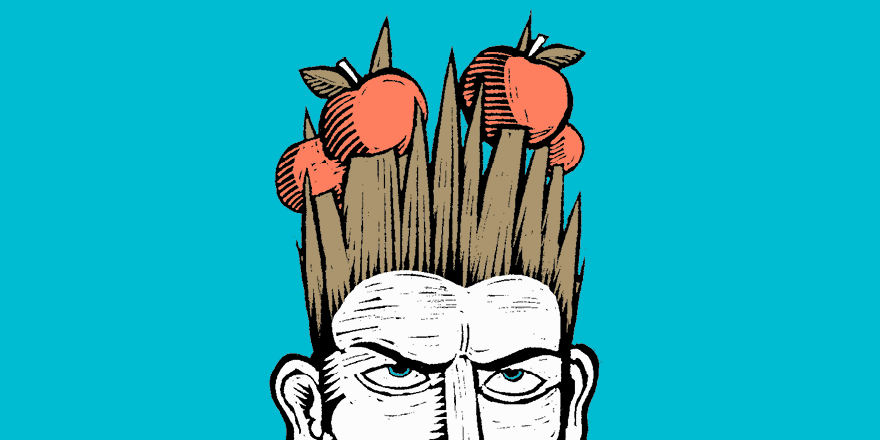
Inside 'A history of Ireland in 100 words': Cróga
29 February 2020Why does this Cú Chulainn have apples spiked on his hair? Find out in today's entry on bravery, bloodiness and the infamous ‘warp spasm’!
To celebrate Seachtain na Gaeilge we're letting you take a peek inside our book A history of Ireland in 100 words. Today's entry is cróga.
Although not used in the final release, Donegal band Clannad composed a soundtrack for the 1995 film Braveheart. The track in question was called ‘Croí cróga’, a literal translation of the film’s title. William Wallace, the Scottish hero of the film, led a bloody rebellion against the English, and it is a neat twist that Irish cróga, which now means ‘brave’, signified ‘bloody’ in the earlier language.
Cróga (earlier cródae) is derived from cró ‘blood, gore’. It is used in the sense ‘bloody’ with reference to the war-goddess, who is frequently depicted as a crow haunting the battle-field and foretelling men’s deaths in war (see Badhbh). While crows do not hunt, they will eat carrion, so the ‘bloodied crow’ (badb cróda) is a fitting image for a supernatural being that passes through the slain corpses of warriors.
Bravery in battle was much prized in the medieval world, and the sense of cróga developed from ‘bloody’ to ‘fierce’ and eventually ‘brave’. Another word for ‘brave’ in Modern Irish is calma. This is not a native word but a borrowing either from Old English calm or Old French calme. In the tale of ‘Bricriu’s feast’, three competing warriors encounter a giant in the wilderness who is described as calma. The giant is hardly to be imagined as ‘brave’, as we would understand it, but rather he is ‘fearless’ on account of his immense power.
The most iconic example of courage from medieval Ireland is the single-handed defence of Ulster by the territory’s preeminent warrior, Cú Chulainn, against the invading army of the rest of Ireland during ‘The cattle-raid of Cooley’. Cú Chulainn is depicted in this narrative as just a young lad, but he nevertheless despatches his enemies with ease.
In spite of all of this, medieval Irish literature shows obvious concern about the dangers of unbridled aggression. A collection of wise sayings, attributed to King Aldfrith of Northumbria, who died around 705 and whose mother was said to be Irish, calls for restraint in the use of violence, warning that ‘vigour begets hostility, hostility begets enmity’ (ad-cota brig barainn, ad-cota barae bibdaid).
Cú Chulainn himself often embodies the destructive forces of the warrior, which can be used positively in defence of his homeland but also can threaten it. When incited to battle, he undergoes an uncontrollable contortion or ‘warp spasm’ (riastrad), with his body twisting and distorting wildly within its own skin. His hair becomes so bristled that apples falling from a tree would become spiked on its individual strands. But one tale, ‘The death of Aífe’s only son’, sets out to create distance between the fantastical violence of the tales and a more rational approach required for the author’s own time. In this story, a rigid observance of the ancient protocols of war leads Cú Chulainn to kill his own son. The intention, it seems, is to send out a message that rampant fury can slide into destructiveness and consume itself.
A history of Ireland in 100 words is a book, a banner campaign and an exhibition. Find our more at www.ria.ie/100words.



